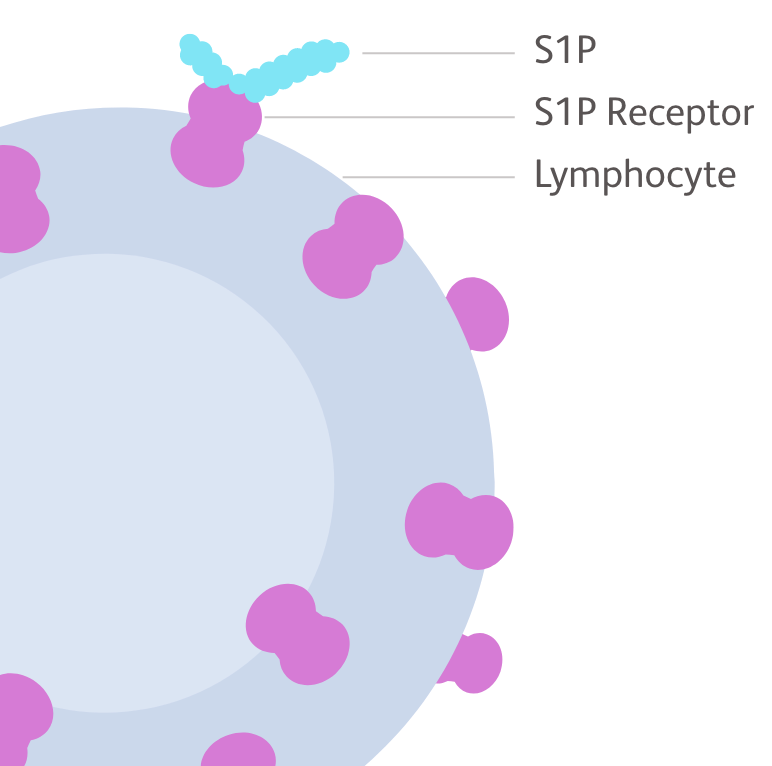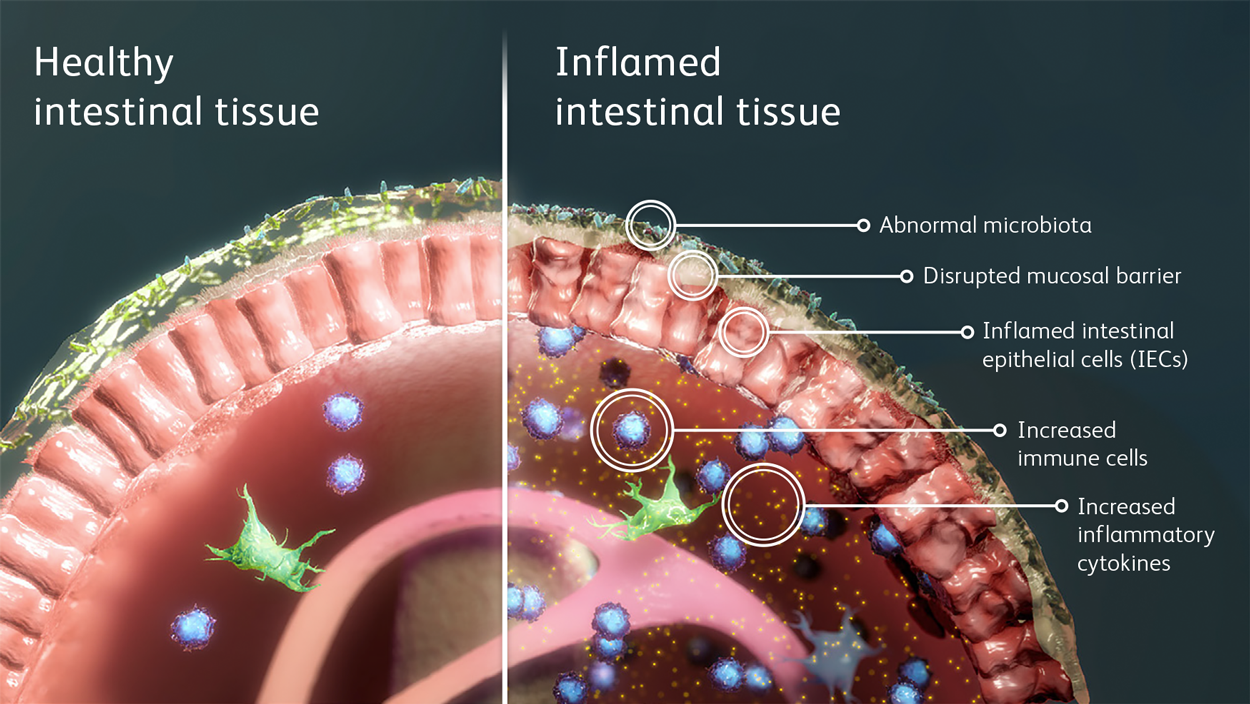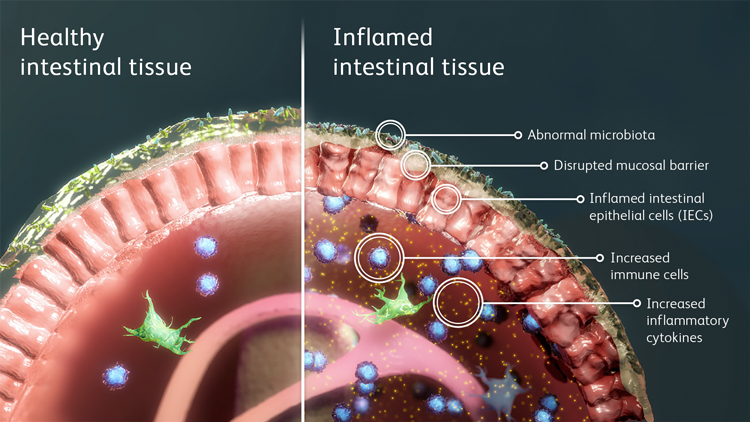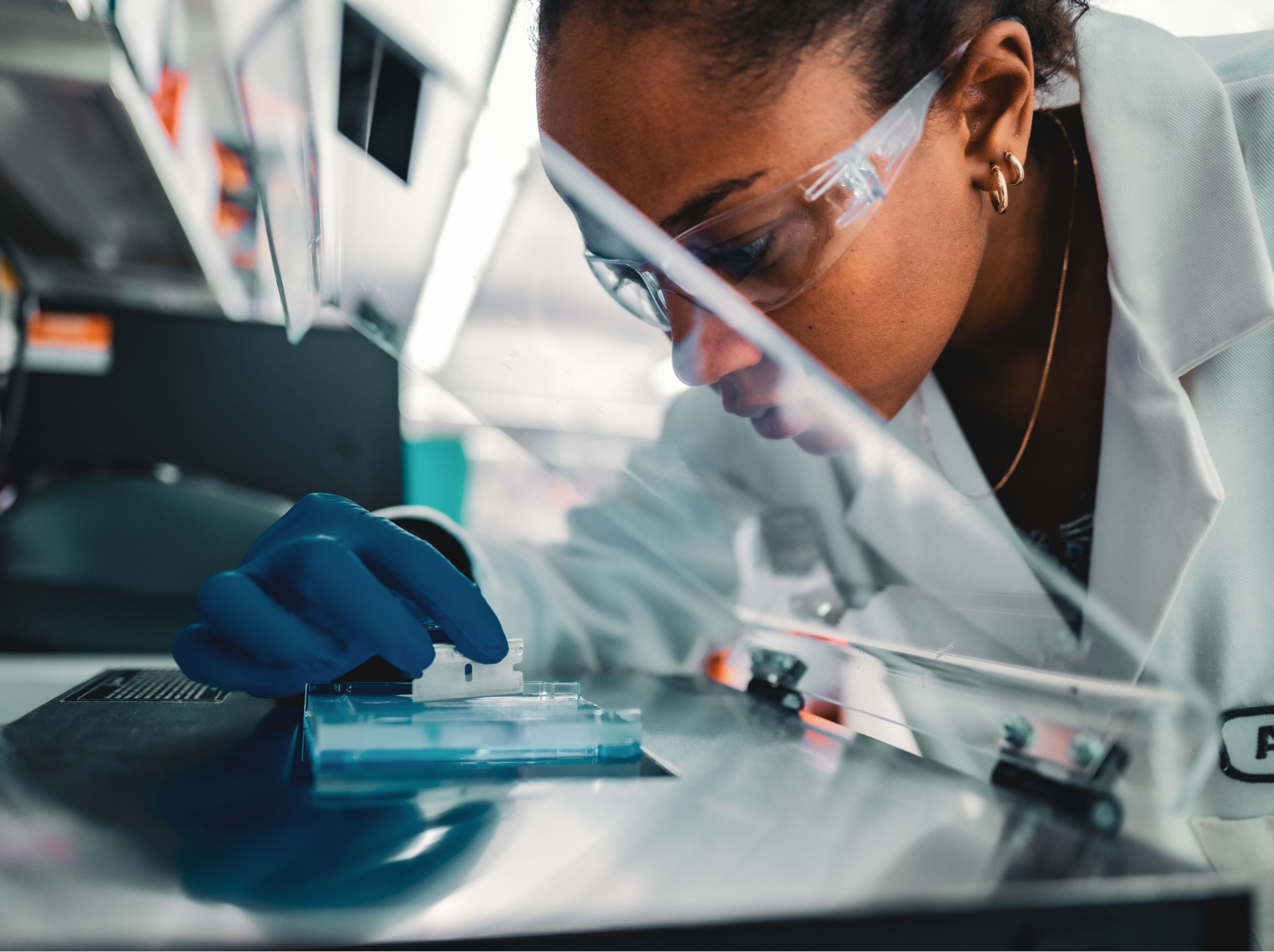The Role of S1P in Inflammation
Sphingosine-1-phosphate (S1P) signaling helps to regulate the immune system, particularly the migration of white blood cells, also known as lymphocytes, from lymphoid tissues into circulation.4-6
These lymphocytes follow the S1P gradient to the site of inflammation, then recruit immune cells and inflammatory mediators, promoting chronic inflammation.1,2
S1P signaling is one of the many areas under investigation at Bristol Myers Squibb. Learn more about our work in Immunology by visiting: https://www.bms.com/researchers-and-partners/areas-of-focus.html ![]()

A key function of S1P signaling is to draw lymphocytes to the site of inflammation.9,10,11
- S1P in UC
Sphingosine-1-phosphate (S1P) Signaling in Ulcerative Colitis
The Gut’s Immune System
Within the gut, the immune system tightly controls the response to potentially harmful foreign substances (also known as antigens).1
In ulcerative colitis and Crohn’s disease, immune homeostasis is disrupted, leading to swelling or inflammation of the intestinal tissue.2,3
S1P Signaling and Disease
In patients with UC, there are higher levels of S1P in the swollen and inflamed tissues of the gut.3-6
S1P signaling allows activated lymphocytes to leave the lymphoid tissue and go into circulation, traveling throughout the body.3-5 The activated lymphocytes migrate to the gut where they can cause inflammation and tissue destruction.5
Advancements in the understanding of S1P signaling and lymphocyte migration have allowed scientists to advance research in UC.
S1P, Sphingosine-1-phosphate; IBD, Inflammatory Bowel Disease; UC, Ulcerative Colitis.
- Belkaid, Y. and Hand, T. Role of the microbiota in immunity and inflammation. Cell. 2014 Mar 27; 157(1): 121–141.doi: 10.1016/j.cell.2014.03.011.
- Lee, S. et al. Immunological pathogenesis of inflammatory bowel disease. Intest Res. 2018;16(1):26-42.
- Degagne, E. and Saba, J. S1pping fire: Sphingosine-1-phosphate signaling as an emerging target in inflammatory bowel disease and colitis-associated cancer. Clin Exp Gastroenterol. 2014;7:205-14.
- Nielsen, O. et al. Sphingosine-1-Phosphate Signaling in Inflammatory Bowel Disease. Trends Mol Med. 2017 Apr;23(4):362-374. doi: 10.1016/j.molmed.2017.02.002.
- Aoki, M. et al. Sphingosine-1-Phosphate Signaling in Immune Cells and Inflammation: Roles and Therapeutic Potential. Mediators Inflamm. 2016;2016:8606878. doi:10.1155/2016/8606878.
- Eksteen, B. et al. Lymphocyte homing and its role in the pathogenesis of IBD. Inflamm Bowel Dis. 2008 Sep;14(9):1298-312. doi: 10.1002/ibd.20453.
- Scott, F. et al. Ozanimod (RPC1063) is a potent sphingosine-1-phosphate receptor-1 (S1P1) and receptor-5 (S1P5) agonist with autoimmune disease-modifying activity. Br J Pharmacol. 2016;173(11);1778-92.doi: 10.1111/bph.13476.
- Peyrin-Biroulet, L. et al. Modulation of sphingosine-1-phosphate in inflammatory bowel disease. Autoimmun Rev. 2017 May;16(5):495-503. doi: 10.1016/j.autrev.2017.03.007.
- Danese S et al. J Crohns Colitis. 2018;12(suppl 2):5678-S686.
- Aoki M et al. Mediators Inflamm. 2016;2016:8606878.
- Schwab SR, Cyster JG. Nat Immunol. 2007:8:1295-1301.









